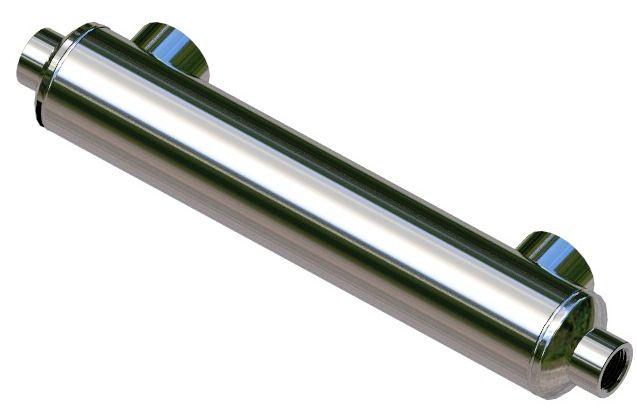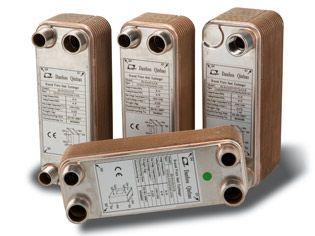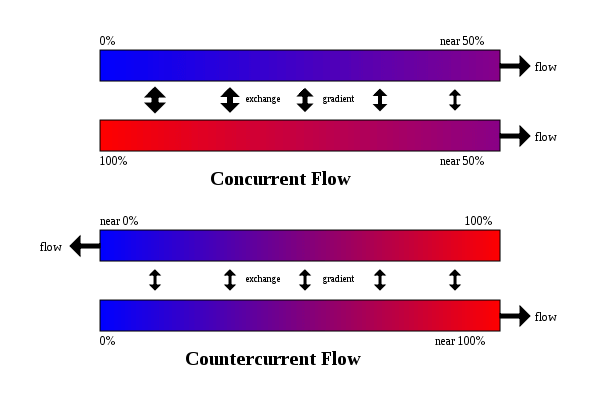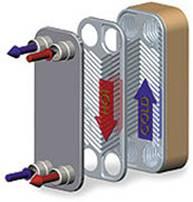Used for Solar Pool Heating Systems.
Three variables are important in transferring energy when using a solar heat exchanger.
Area of heat transfer surface separating the two liquids
Flow rate of the two heat transfer fluids.
Pressure drops across both sides of the heat exchanger.
Increasing the surface area will decrease the temperature differential between the two sides needed to drive the heat transfer across the hot side to the colder side. Increasing the flow so that it is more turbulent improves the heat transfer, but also lowers the differential temperature between each side. The less restrictive the heat exchanger is to flow (the lower the pressure drop) the less amount of energy is required to pump the fluid through the heat exchanger. Brazed plate solar heat exchanges have approximately the same pressure drop on each side and provide for a large heat transfer area given the volume of the heat exchanger. The solar pool heat exchanger is designed to handle higher flows and produces only a small pressure drop on the pool side of heat exchanger which means the pool pump does not have to work as hard.
The physical direction of the flow in the heat exchanger is recommended to be in opposite directions. This is known as Counter Current Flow. Hot and cold fluids running in the opposite directions create a more uniform differential temperature gradient across the heat transfer area and this leads to 23% greater heat transfer than if the fluids ran in the same direction (concurrent). Therefore, in solar heat exchanger applications the hot and cold should enter from opposite ends.












